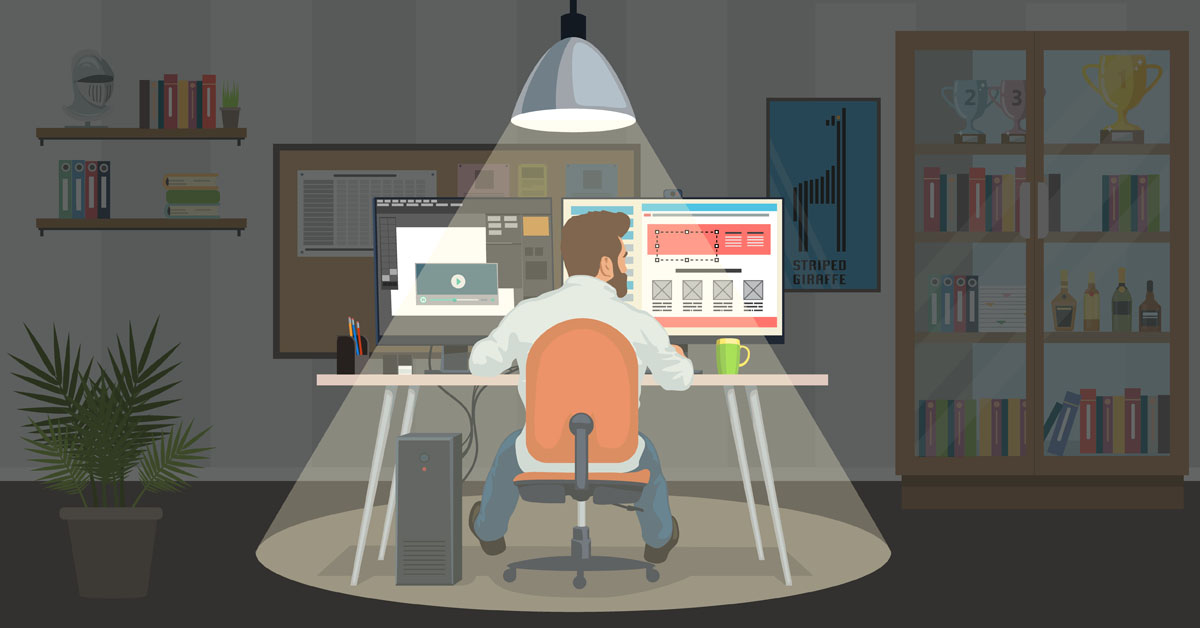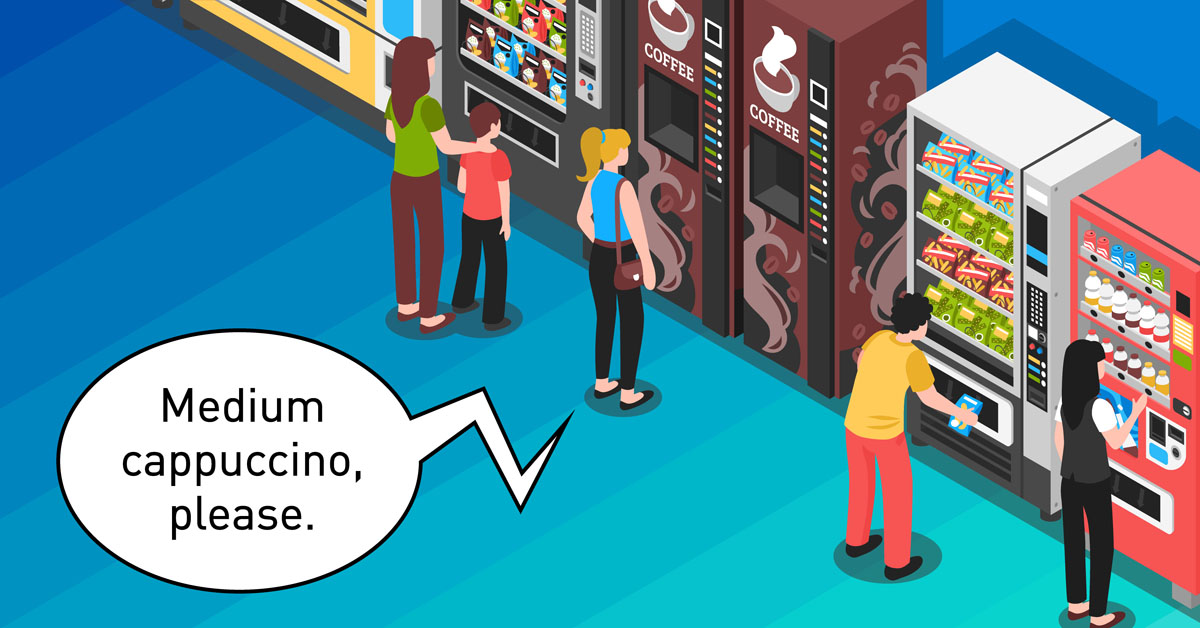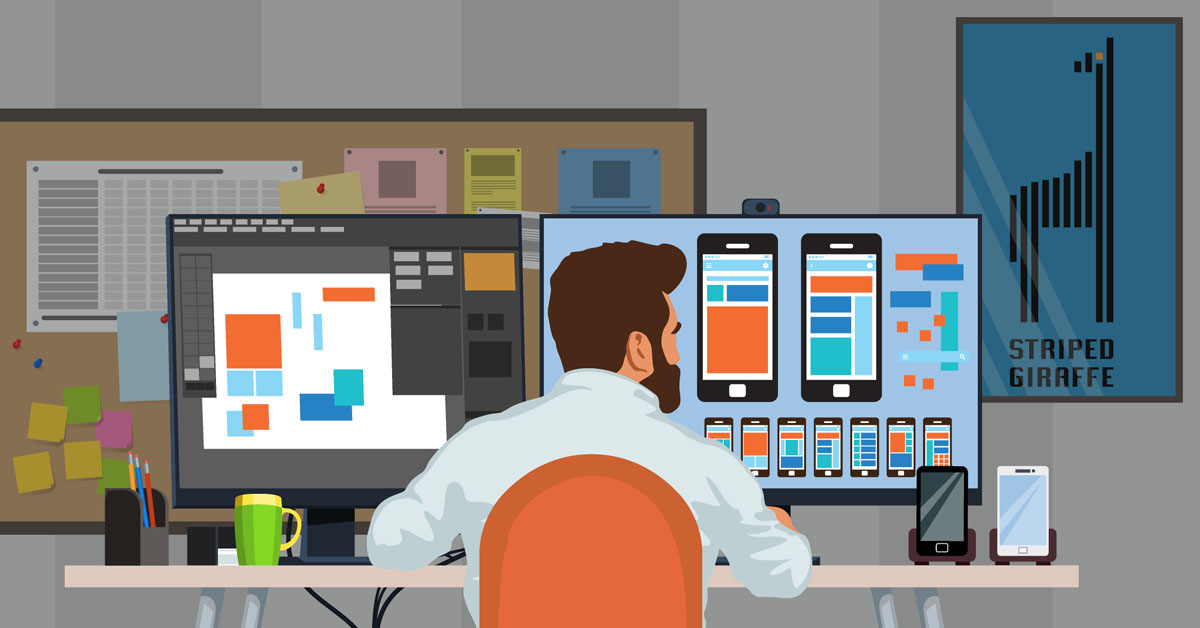
UX Trends That Will Shape the Coming Years
Everything changes. And that’s a good thing. Thanks to our ongoing collaborations with clients from the most varied of industries, our work with new technologies, and our close observation of the market, we are well acquainted with the latest UX trends – and we help decide which ones prevail. With this blog we want to keep you up to date with the developments on the UX front.
Invisible interfaces
“1-3-4-8… PIN: 1-3-4-8!” — the young man next to me screams at the ATM. “ATM! Give me 300 **** euros!”
No, voice recognition will not replace all other user interfaces. But over time, voice and gesture commands will come to be a useful supplement to the visible GUIs and interfaces we have grown accustomed to – where they make sense. “The best user interface is an invisible one.” That is an irrefutable fact, and it will have a big influence on our lives and how usability is designed and realized in the future.
At the moment there are still obstacles to be overcome when it comes to making natural speech, with all its facets such as timbre and dialect, understandable to machines. People still have to use specific commands or at least predetermined sentences to communicate with computers. But it won’t be long before intensive research, advances in the field of machine learning and AI overcome these hurdles.
In many fields, voice control is already a normal part of our everyday lives. While Google Home, Alexa and the like still focus on individual areas of life, very soon this limitation will give way to a fully networked and universal approach that opens up many new fields of application.

What does that mean for web projects? With voice control, user stories will be far more complex in future. You need to know who will be doing speaking, in what environment, with which device. Finding and implementing just the right design for connected device solutions, and accounting for the needs and behavior of the individual users is a major challenge.
This is making flexible “headless content management” systems more important; systems that act as a central content memory and that are entirely independent of how the content is used. They can supply the widest range of applications and are the best basis for improving user experiences on all devices.
Typography rules
Illustrations, large-scale image banners and sliders have become far more common in recent years. But the benefit of being able to convey emotions and communicate key messages with eye-catching visuals also has its downsides: in these times of sensory overload, there is the danger that people might perceive too many pictures as being more and more a hindrance to gaining information. And loading times, the often poor presentation and the lack of alternatives on mobile devices are also starting to exasperate users.
This means that page layouts dominated by copy are becoming more important. They are ideal for presenting information quickly and precisely, without having to overtax the user with large volumes of text. Web texts have to be relevant, complex, informative, entertaining and descriptive.
Opinions are divided on the question of how long texts should be. There is no such thing as the ideal amount of copy. It can only be based roughly on its purpose or the terminal device it will be viewed on. Is the user just seeking to fill the brief time between two bus stations? Is she curled up on her sofa with her tablet? Or is he doing in-depth research at work? We don’t know. So it is recommendable to offer various text options, at least for complex content – a detailed version and a more concise one for mobile devices.
As a guideline:
- Reports: more than 1500 words
- Feature presentations: more than 700 words
- Blog articles: 500 to 1000 words
- Landing pages: 300 to 500 words
- News articles: 250 to 400 words
- Social media posts: 50 to 150 words
- Product descriptions / Online shops: 75 to 150 words
- Micro-copy / Buttons / Navigation: 1 to 3 words
The choice of reader-friendly and space-optimized fonts is also an important factor when it comes to getting read. Well-designed text content is also coming back into focus due to the standardized use of customer-specific fonts across all media – especially for brands.
So we are of the opinion that the investment in editorial quality, in the right font for use across all media and its integration into UX concepts will be an extremely important topic in the coming years.
Mobile design first. Seriously.
The trend away from stationary internet usage and toward the mobile internet is moving forward in strides. So when it comes to web design there is no other option than to ensure a responsive design for multiple screen sizes. Current statistics show that the smartphone is becoming the primary and hence most important device when it comes to accessing the internet. So mobile will be at the focus of web design in the years to come.
| Global: | Germany: | |
| Mobile | 49,11% | 38,76 % |
| Desktop | 47,02 % | 55,17% |
| Tablet | 3,87% | 6,07% |
Source: statcounter.com, January 2019
The “mobile first” approach – i.e. putting the primary focus of UX design on the smartphone, and only then on tablets and large computer screens – will be an absolute must, requiring a change in thought processes, also at companies that contract out their UX design.

Large desktop layouts have a big impact, and they are great for imparting a first impression and developing the basic features of a design. But they are no longer suitable as the grounds for decision when making a new design, website or shop relaunch, or launching a new application.
Mobile first necessitates the intelligent use and further development of desktop-learned UI elements. That has consequences for the structure of the website, for intuitive and gesture-friendly navigation, for the use of click instead of hover functions and much more besides.
Content first: Content, structure and smart content management are more important than ever. Which information is the most important? Which content? Which added value can be offered to desktop users? If you think about the trend of growing smartphone sizes, “thumb-friendly web design” is also playing an ever greater role here. It is important to always see the user’s hand in front of you.
Flat design meets 3D
Clear layout, minimized design, reduction to the essence. Minimalism is now more than a trend in UI design due to the proliferation of mobile usage. “Flat design” has established itself. The Microsoft tiles and Google’s “Material Design” are the best-known examples of this.
But we are not machines. We want to experience design and have fun with interfaces. Used properly, shadows and structures give depth and support the user’s intuition. The right mix of realistic and flat elements will shape the visual aesthetic of the coming years.
Micro interactions
The joy of use when working and interacting with user interfaces will be the central issue for many trends in the upcoming years. Cleverly integrating micro-interactions will give a visual boost to the user experience.
It is crucial for good usability and an enjoyably user experience to make content and interactions easy to understand and experience. What can I expect when I click on this button? What is the next chapter about? Good examples of this are Facebook’s Like button, animated emojis and sensory feedbacks such as smartphones that vibrate.
Well worded and visually attractive texts are vital for good content quality. And yet people are growing ever less willing to read. That is why explanatory videos and animated graphics are a good alternative for conveying content. Employed properly, they are a big plus.

